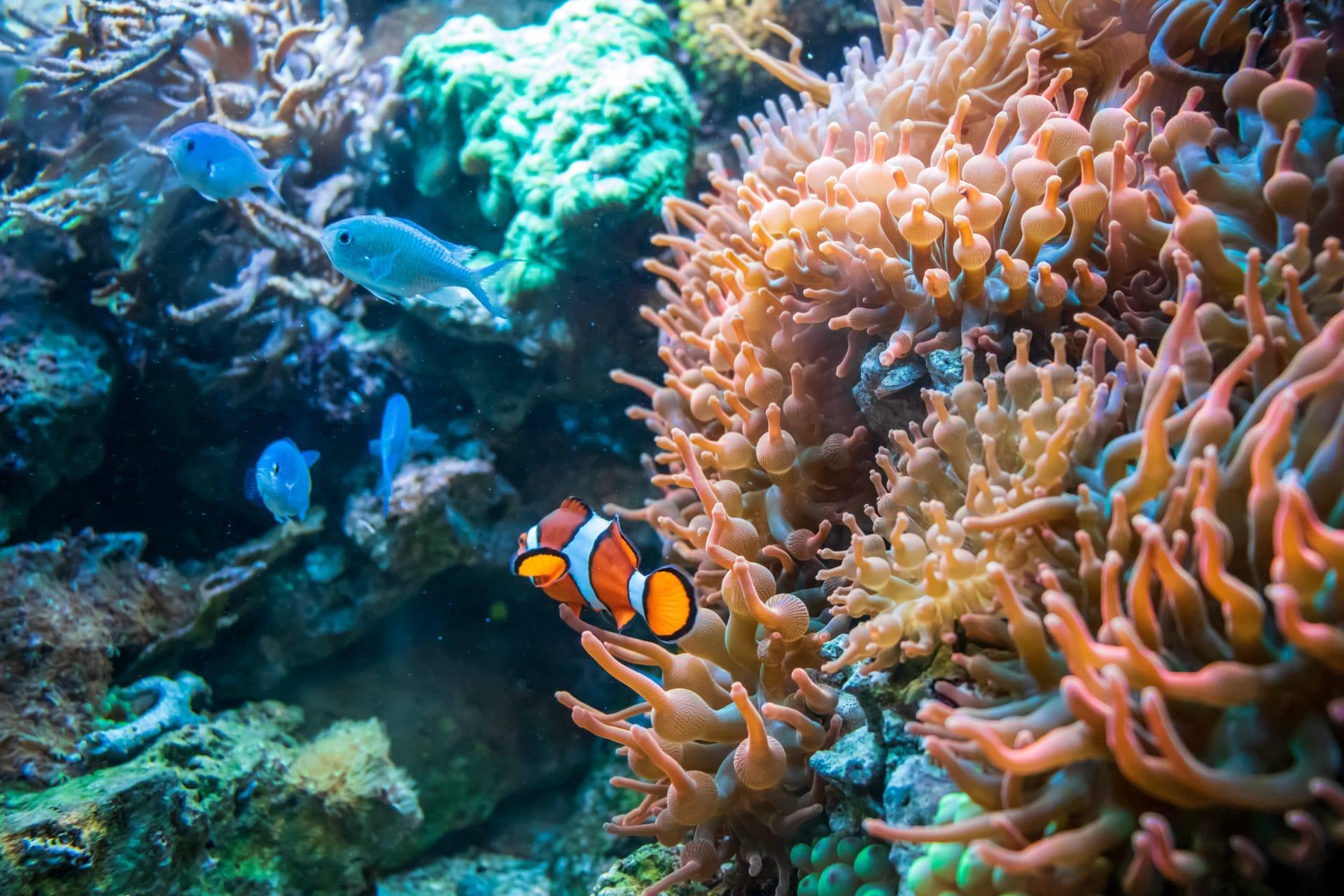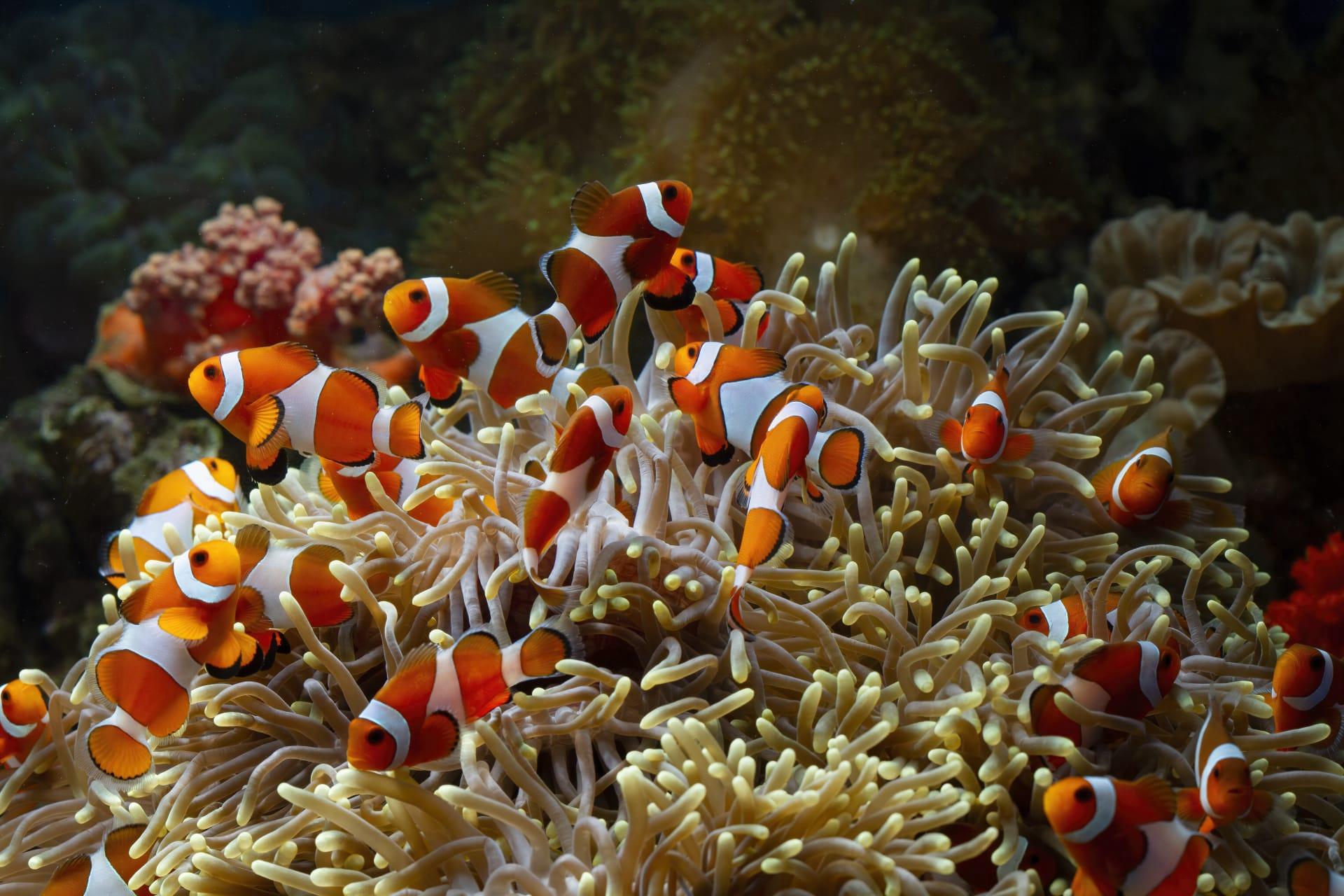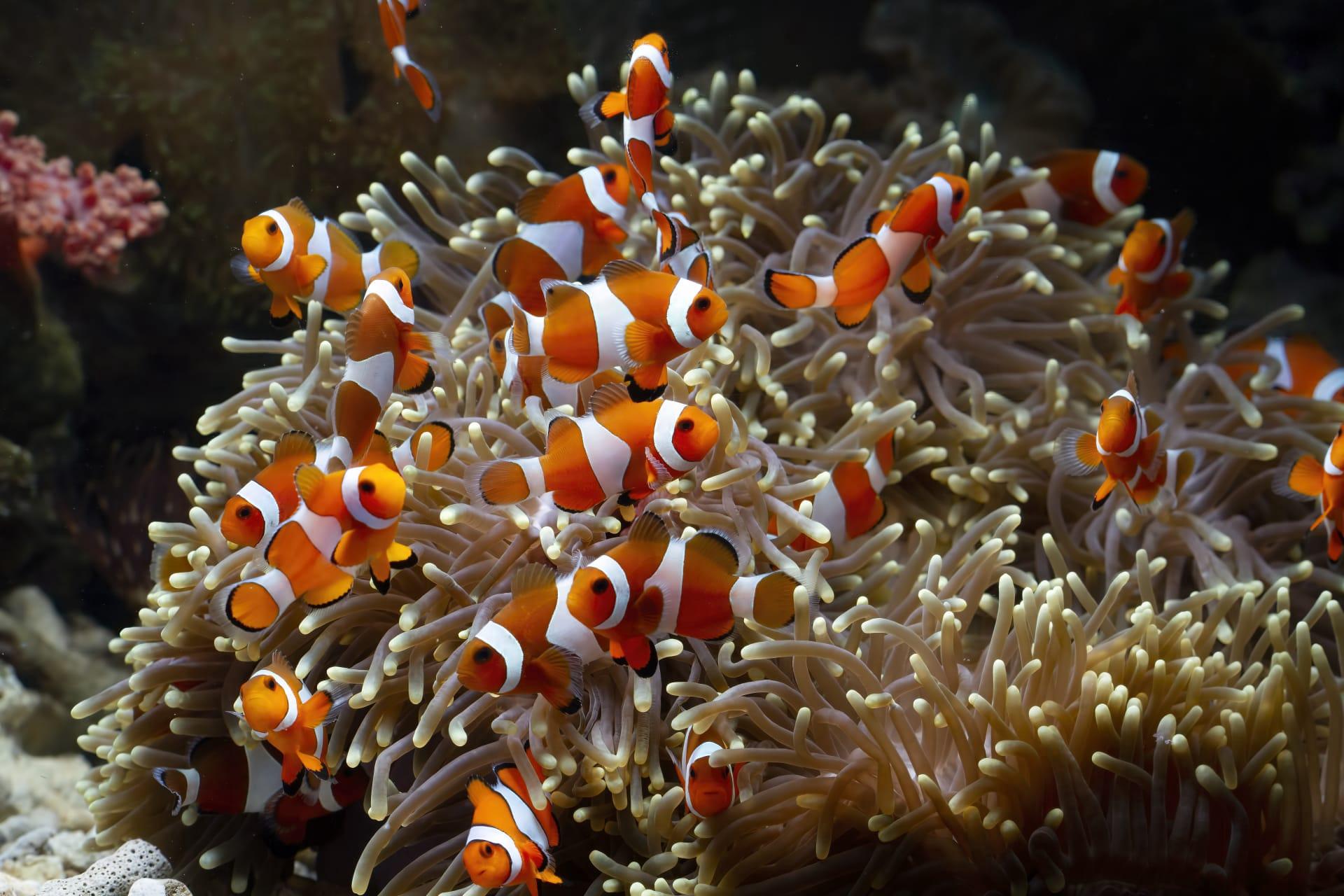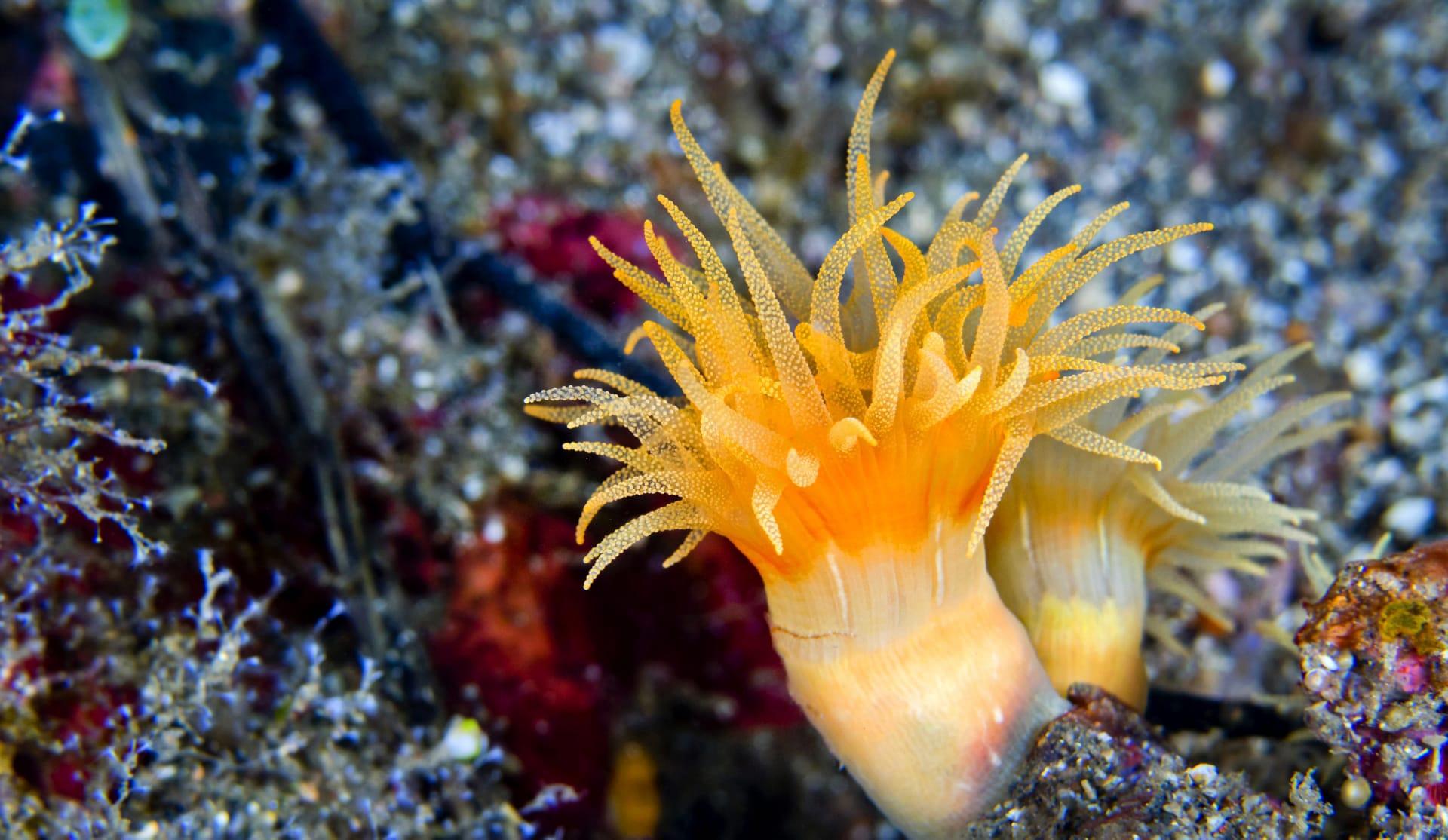Sea Anemone Trivia
- Home /
- Trivia Question /
- Animal /
- Sea Anemone Trivia
1
Question: How do sea anemones reproduce?
Answer: Sea anemones have a fascinating dual-mode of reproduction. They can reproduce asexually by splitting, a process known as binary fission, where one anemone divides into two. Alternatively, they reproduce sexually by releasing sperm and eggs into the water, leading to external fertilization. Interestingly, some species are hermaphrodites, possessing both male and female reproductive organs.
Question: What is the lifespan of a sea anemone?
Answer: The lifespan of sea anemones varies widely among species. Some smaller species may live for only a few years, while larger species can live for decades. Remarkably, certain species like the giant green anemone can live for up to 80 years or more in the wild, showcasing their incredible longevity.

2
Question: Do sea anemones move?
Answer: Contrary to popular belief, sea anemones are not entirely stationary. They can move slowly by gliding on their base or by using their flexible tentacles. However, their movement is usually minimal and limited to short distances, primarily for finding food or escaping unsuitable conditions.
Question: Are sea anemones plants or animals?
Answer: Despite their plant-like appearance, sea anemones are actually animals. They belong to the phylum Cnidaria, which also includes jellyfish and corals. Their plant-like appearance is due to their radial symmetry and stationary lifestyle, but they are predatory creatures with a mouth and tentacles for capturing prey.

3
Question: How do sea anemones feed?
Answer: Sea anemones feed by capturing prey with their tentacles, which are equipped with stinging cells called nematocysts. These cells release a toxin that paralyzes prey such as small fish and shrimp. The prey is then moved to the anemone's central mouth, where it is ingested whole. Anemones also absorb nutrients from symbiotic algae living in their tissues.
Question: Can sea anemones live in freshwater?
Answer: No, sea anemones are exclusively marine animals and cannot survive in freshwater. They are adapted to saltwater environments, and the osmotic balance necessary for their survival is disrupted in freshwater, leading to their demise.

4
Question: Do sea anemones have brains?
Answer: Sea anemones do not have brains or centralized nervous systems. Instead, they have a simple nerve net spread throughout their bodies, allowing them to respond to environmental stimuli and control their movements. This nerve net is sufficient for their survival needs, including feeding, defense, and reproduction.
Question: How do sea anemones interact with other marine life?
Answer: Sea anemones have fascinating interactions with other marine life. Most notably, they form mutualistic relationships with clownfish, which are immune to their stings. The clownfish gains protection from predators, while the anemone benefits from the nutrients in the clownfish's waste. Anemones also associate with various crustaceans and even some species of fish.

5
Question: What is the largest sea anemone species?
Answer: The largest known sea anemone is the giant carpet anemone (Stichodactyla gigantea), which can reach up to 80 cm (about 31 inches) in diameter. These impressive anemones are known for their vibrant colors and large, flat appearance, resembling a carpet on the ocean floor.
Question: Are sea anemones affected by climate change?
Answer: Yes, sea anemones are affected by climate change. Rising sea temperatures, ocean acidification, and pollution pose significant threats to their survival. These factors can lead to bleaching, where anemones lose their symbiotic algae, and to habitat destruction. Conservation efforts are crucial to protect these unique marine creatures and their ecosystems.